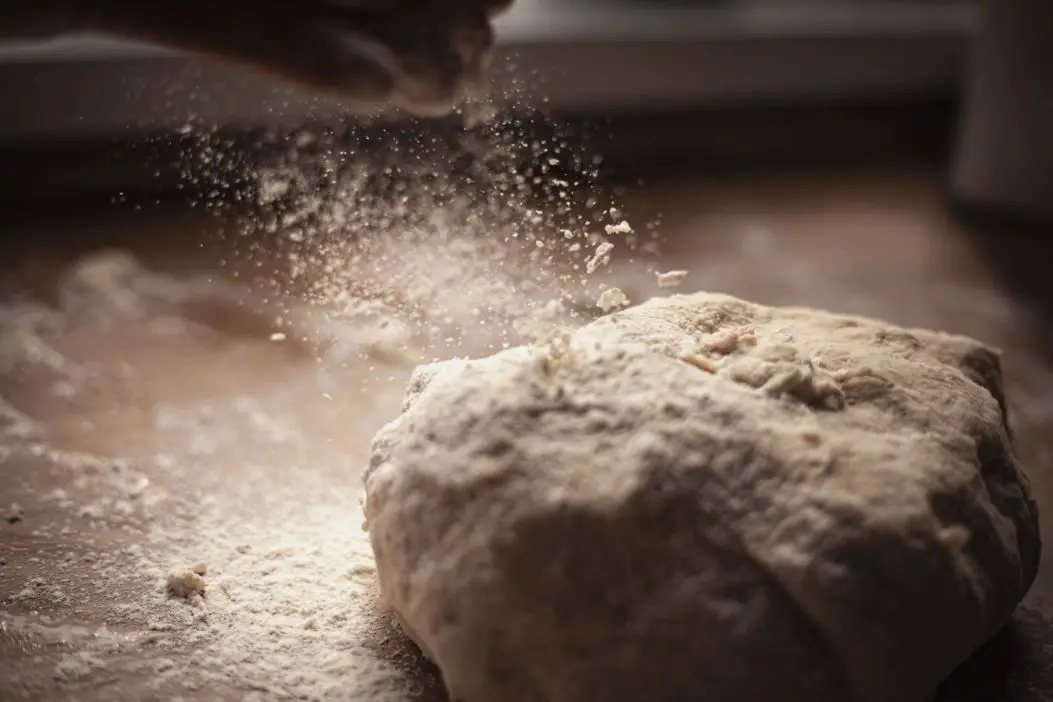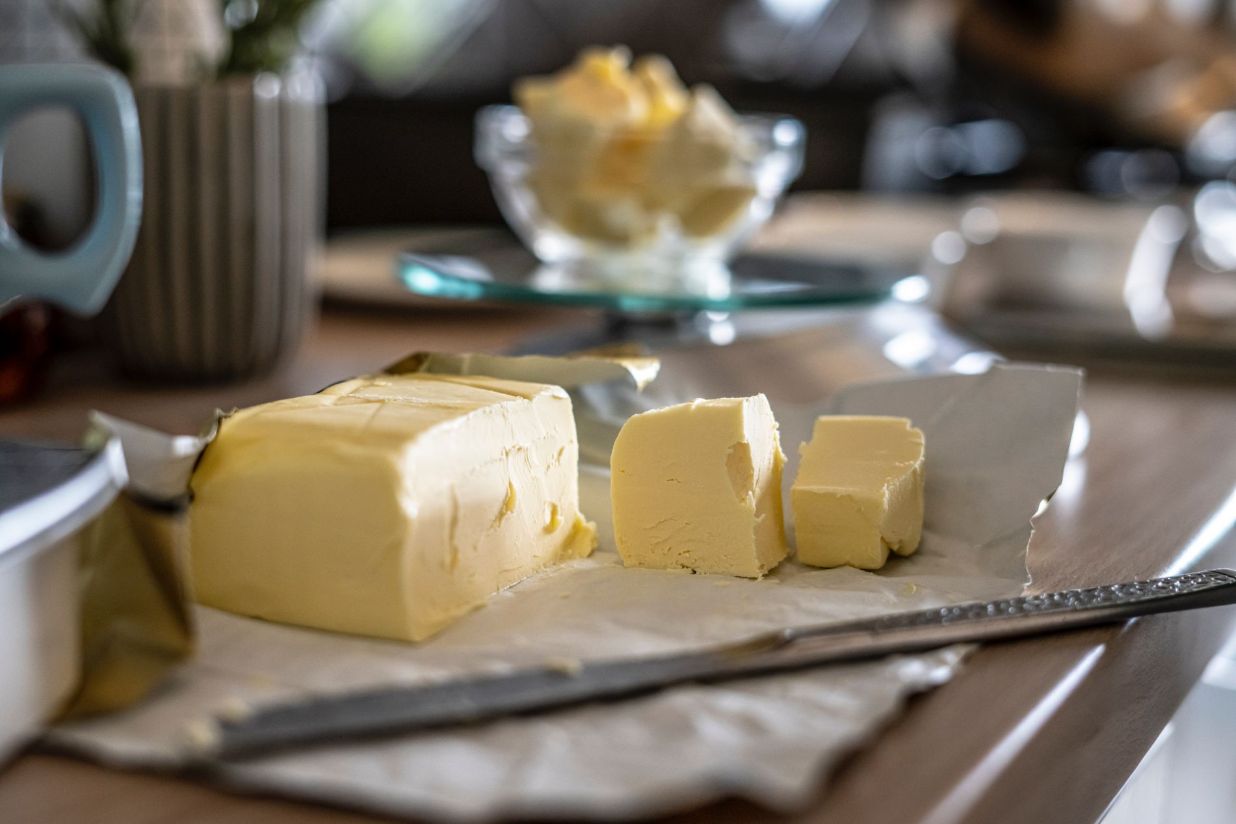Whole wheat bread has become increasingly popular among health-conscious individuals, but it can sometimes have a bitter taste.
The bitterness can be caused by the oils in the bran and germ becoming rancid over time, low-quality flour, the processing method used, and improper fermentation.
In this article, I’ll reveal 5 simple techniques that will help you to get rid of bitterness in your whole wheat bread. These tips are easy to follow and don’t require any special equipment or advanced baking skills.
So, whether you’re baking a loaf of bread for the first time or you’re a seasoned pro, read on to learn how to get rid of bitterness in whole wheat bread!
4 Main Causes of Bitterness in Whole Wheat Bread
Before we dive into techniques for getting rid of bitterness in whole wheat bread, it’s important to understand what causes it in the first place.
1. Role of Bran and Germ in Bitterness
When it comes to baking with whole wheat flour, the bran and germ play a crucial role in making it a healthy and nutritious option.
These outer layers of the wheat kernel are packed with fiber, vitamins, and minerals that our bodies need to function properly.
Not only do they contribute to our overall health, but they also add a nutty and hearty flavor to baked goods that many people enjoy.
However, as with many good things, there is a downside. The bran and germ contain oils that can become rancid over time, especially when exposed to heat, light, and air.
This can result in a bitter taste and an unpleasant odor in your baked goods.
So, it’s important to use fresh whole wheat flour to ensure that your bread, muffins, or other baked goods come out tasting delicious and smelling fresh.
2. Impact of Flour Quality
The quality of flour used in making whole wheat bread can affect the taste and texture of the final product.
Flour with low protein content can lead to bitter bread because protein helps to trap gas bubbles during fermentation.

These trapped gas bubbles make the bread rise and give it a light texture. If the flour lacks enough protein to trap the gas bubbles, the bread can turn out dense and bitter.
Using high-quality whole wheat flour with a protein content of around 12-14% can help reduce bitterness and improve the texture of the bread.
The protein content in flour varies depending on the type of wheat used.
Whole wheat flour is made from the whole grain of wheat, including the bran, germ, and endosperm, making it a more nutritious option than refined white flour.
3. Effect of Processing Methods
The processing methods used to make whole wheat flour can also impact its bitterness.
Stone-ground whole wheat flour, which is made by grinding the wheat kernel between two stones, tends to produce a coarser flour with a nuttier flavor and less bitterness.
On the other hand, commercially milled whole wheat flour, which is made using steel rollers, can produce finer flour with a higher extraction rate but may also result in a more bitter taste.
Therefore, choosing the right processing method for whole wheat flour can play a vital role in reducing bitterness in whole wheat bread.
4. Role of Yeast and Fermentation
Yeast and fermentation play a crucial role in the taste and texture of whole wheat bread.
Proper fermentation allows the yeast to convert sugars in the flour into carbon dioxide gas, which causes the bread to rise.
If the bread is not fermented long enough, it can result in a bitter taste. Conversely, if the bread is over-fermented, it can lead to a sour taste.
Finding the right balance of fermentation time and yeast activity can help reduce bitterness and create a balanced flavor in whole wheat bread.
How to Get Rid of Bitterness in Whole Wheat Bread – Revealed
Now that we know what causes bitterness in whole wheat bread, let’s explore 5 simple techniques for reducing or eliminating it.
1. Soaking Whole Wheat Flour
Soaking whole wheat flour in water or milk before mixing it with other ingredients is one technique that can help reduce bitterness in whole wheat bread.
This process allows the flour to absorb moisture, which can help soften its flavor. Soaking can also help improve the texture of the bread and make it easier to work with.
To soak whole wheat flour, simply mix it with enough water or milk to form a thick paste, cover it, and let it sit for several hours or overnight.
When it’s time to make your bread dough, mix the soaked flour with the other ingredients and proceed with the recipe as usual.
2. Adding Sweeteners
Another technique to reduce bitterness in whole wheat bread is to add a small amount of sweeteners like sugar, honey, or molasses to the dough.
These sweeteners can balance out the bitter taste of whole wheat flour and make the bread more appealing to the palate.
However, it’s important not to add too much sweetener as this can make the bread overly sweet.
You should experiment with different amounts to find the right balance of sweetness and bitterness in the bread.
3. Using a Poolish or a Biga
A poolish or a biga is a type of pre-ferment that is added to bread dough to improve its flavor.
These pre-ferments can also help break down the bitter compounds in whole wheat flour, resulting in a milder taste.
A poolish is a wet pre-ferment made from flour, water, and a small amount of yeast. It’s left to ferment for several hours or overnight before being added to the bread dough.
A biga is a drier pre-ferment made from flour, water, and yeast, and it’s also left to ferment before being added to the dough.
Using a poolish or a biga can also help improve the texture and rise of the bread, making it lighter and fluffier.
4. Choosing the Right Yeast
Choosing the right type of yeast is critical when making whole wheat bread. Some types of yeast produce more acid than others, which can contribute to bitterness.
You should look for yeast strains that are specifically designed for whole wheat bread.
Instant yeast or active dry yeast are good options for whole wheat bread as they produce less acid than other types of yeast.
5. Incorporating Fat
Incorporating a small amount of fat, such as butter or oil, into the bread dough can help mask the bitterness of the whole wheat flour and give the bread a richer taste.

Fat also helps improve the texture and moisture content of the bread, making it more enjoyable to eat.
But be careful not to add too much fat as this can make the bread too heavy or greasy. A small amount, around 1-2 tablespoons per loaf, is usually sufficient.
Why Is My Whole-Grain Bread Bitter?
Whole grain bread can taste bitter for several reasons, and it’s essential to identify the specific cause to address the issue.
Here are some common reasons why your whole-grain bread might be bitter:
1. You’re Using Bitter Type of Whole Grains
The bitterness of whole grain bread can vary depending on the type of whole grains used.
Some grains, like quinoa and amaranth, have a natural bitterness that can carry over into the bread.
If your bread contains a significant amount of these grains, it may taste bitter.
2. You Used Overly Toasted Grains
Whole grains used in bread recipes are often toasted before being incorporated into the dough.
If the grains are toasted for too long or at too high a temperature, they can become bitter.
Properly toasted grains should have a nutty aroma and flavor without bitterness.
3. Stale Ingredients
Using stale or old whole-grain flour can lead to bitterness in your bread.
Whole grain flour contains oils that can go rancid over time, leading to an unpleasant taste.
4. Insufficient Sweetness
Whole-grain bread recipes often call for a sweetener like honey, molasses, or sugar to balance the bitterness of the whole grains.
If you don’t use enough sweetener in your recipe, the bread may turn out bitter.
How to Get Rid of Bitterness in Whole Wheat Bread – Conclusion
In conclusion, baking delicious whole wheat bread can be a bit tricky, but with a little bit of knowledge and experimentation, anyone can create a mouth-watering and nutritious loaf.
It’s important to use fresh whole wheat flour with a protein content of around 12-14% and to choose the right processing method to reduce bitterness in the bread.
Balancing yeast activity and fermentation time is also crucial to creating a well-balanced flavor and texture.
And, if you’re still struggling with bitterness, trying out one of the five techniques we discussed, such as soaking the flour or adding sweeteners, can help you achieve a tastier loaf.
Don’t be afraid to experiment and have fun in the kitchen – after all, that’s what baking is all about!
Frequently Asked Questions
Why Does My Bread Have a Bitter Aftertaste?
A bitter aftertaste in bread can result from several factors. Over-fermentation of the dough, excessive use of certain whole grains like rye or bran, or use of expired ingredients can contribute to bitterness. Additionally, improper storage or exposure to mold can also lead to a bitter taste.
Is Multigrain Bread Bitter?
Multigrain bread can have a slightly nuttier or more complex flavor due to the variety of grains used, but it shouldn’t be inherently bitter.
Bitterness may occur if one of the grains in the mix has gone rancid or if the bread is overcooked. In general, multigrain bread should have a pleasant, wholesome taste rather than bitterness.

